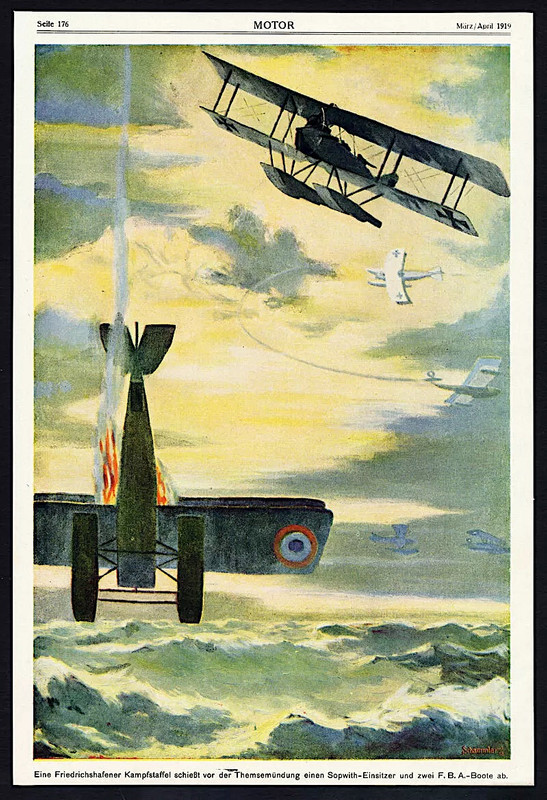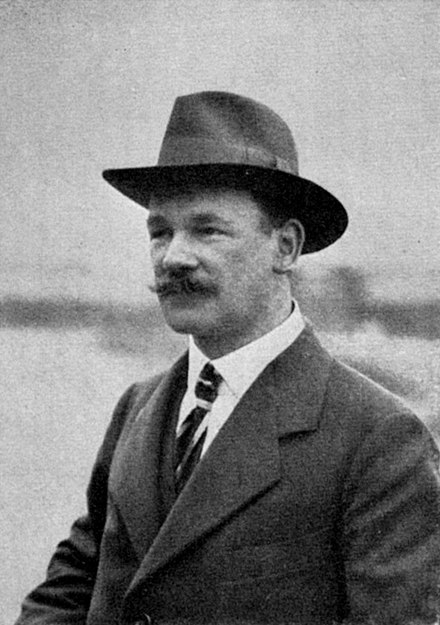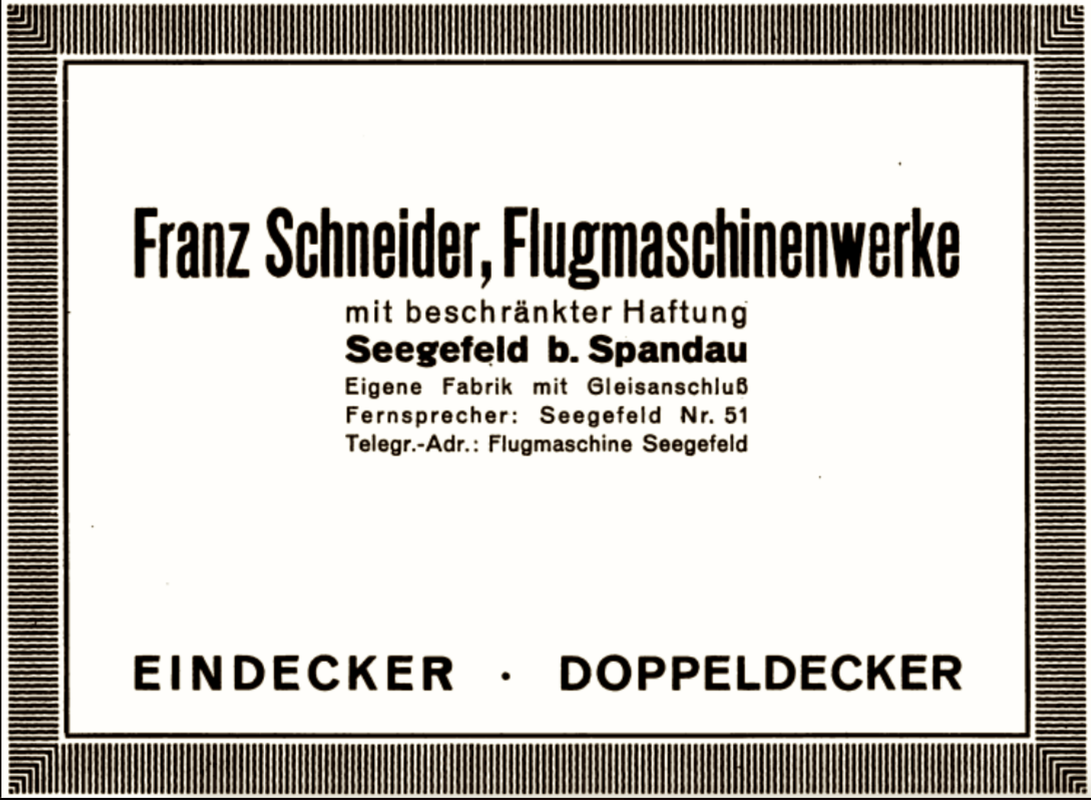Seaplane Swan SongConcluding this week's leitmotif on German aircraft, here's a full-page, full-color, post-war reminiscence of that nation's North-Sea aerial prowess. Translation: "
A Friedrichshafen combat squadron shoots down a Sopwith single-seater and two F. B. A. boats before the Thames estuary.". This illustration is likely related to an add for Franz Schneider
Flugmaschinenwerke m.b.H., on the opposite page of the German semi-monthly periodical 'Motor', which published it.
Schneider is a less-remembered but interesting character. The Swiss-born engineer worked with Nieuport before the war, relocating to relocated to Johannistal in 1911 to become the technical director for Luft-Verkehrs-Gesellschaft AG. There he designed the LVG's B and C types. He is credited to have invented an interruptor gear of sorts well before Fokker: "
In 1913, Schneider patented a firing device for firearms on aircraft at the German Imperial Patent Office (DRP No. 276396). This patent used a locking mechanism that blocked the trigger of the weapon via a rod coupled to the crankshaft of the engine when a propeller blade was in front of the muzzle."
"
At the end of 1916, Schneider left the LVG after financial and legal disputes. Franz Schneider acquired the factory facilities in Seegefeld from the liquidated Deutsche Eisenbahn-Speisewagen-Gesellschaft and founded his own company, Franz Schneider Flugmaschinenwerke, with around 125 employees on January 22, 1917. Among the employees was the young Viktor Carganico, and construction was supervised by Lieutenant Elchleb. Although Schneider designed a single-seater fighter in 1918, the factory mainly repaired front-line aircraft from Albatros, DFW and LVG. In 1919, Schneider and his family moved to Seegefeld.
After the end of the First World War, aircraft could only be built in Germany under severe restrictions, so the company tried to open up new business areas. Around 1920, Schneider therefore changed the company name to Franz Schneider Maschinenwerke and, in addition to building and selling aircraft, now also offered railway carriages and machines of all kinds. In 1937 he went to Japan at the invitation of a Japanese general, and five years later he died in Tokyo. Engineer Franz Schneider's urn is buried in the foreign cemetery in Yokohama." (via wikipedia).
(from Motor, March/April 1919):



Have a look back at a Sopwith Baby, similar this one going down in flames, by forum member PrzemoL:
https://forum.ww1aircraftmodels.com/index.php?topic=10939.0